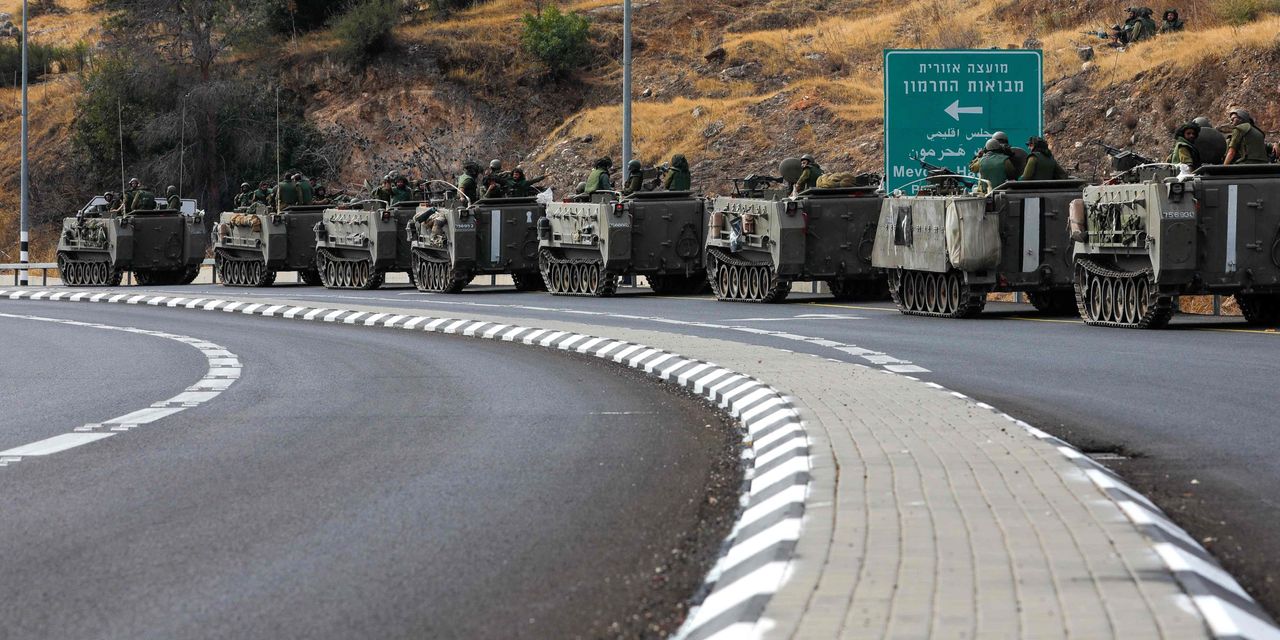Oil prices settled more than 4% higher on Monday, as traders assessed implications for crude supplies in the Middle East after a surprise, deadly attack by Hamas on Israel over the weekend.
Price action
-
West Texas Intermediate crude for November delivery
CL00,
-0.49% CL.1,
-0.49% CLX23,
-0.49%
rose $3.59, or 4.3%, to settle at $86.38 a barrel on the New York Stock Exchange, with prices for the front-month contract settling at their highest since Oct. 3, FactSet data show. -
December Brent crude
BRN00,
+0.07% BRNZ23,
+0.07% ,
the global benchmark, climbed $3.57, or 4.2%, to $88.15 a barrel on ICE Futures Europe. -
November gasoline
RBX23,
+1.05%
rose 2.1% to $2.24 a gallon, while November heating oil
HOX23,
+1.86%
gained 2.3% to $2.97 a gallon. -
November natural gas
NGX23,
+0.80%
added 1.1% to $3.38 per million British thermal units.
Market drivers
The energy market was on edge after the surprise attacks by Hamas on Israel on Saturday, notably as the Wall Street Journal reported that Iranian security officials aided Hamas in the planning. Iran’s foreign ministry spokesman, however, denied Iran’s involvement “in the decision-making of other countries, including Palestine, according to The Times of Israel.
Read: Here’s what Israel-Hamas war means for oil prices as fighting continues
“The violence will keep upward pressure on oil prices, at least in the short term,” said Michael Lynch, president of Strategic Energy & Economic Research. “An Israeli attack on Iran would certainly push prices over $100.”
The question for now is “whether the Saudis will release oil to cool the markets or argue that the fundamentals are not changed by the war and they don’t want to flood the market,” Lynch told MarketWatch.
The attacks have left around 700 people dead in Israel and more than 400 in Gaza, with Hamas also claiming to hold more than 130 captives.
Oil prices surged over 4% as trading opened on Sunday, amid concerns that any involvement of Iran, if affirmed, will mean possible sanctions on that country’s crude exports, which have pushed toward pre-2018 levels in recent months.
Read ‘Fear trade’: What Israel-Hamas war means for oil prices and financial markets
“In direct terms, there is no meaningful, immediate impact to crude supply or demand” from the conflict, Robbie Fraser, manager, Global Research & Analytics at Schneider Electric, said in a daily note.
“Crude production in Israel and Gaza (the Palestinian territory controlled by Hamas) is essentially zero,” he said. “Demand for refined products in the immediate region is not enough to shift global market conditions.”
“Instead, prices appear to be rallying on a more general risk tied to escalating tensions, particularly amid reports that Iran — a longtime Hamas ally — may have played a key role in coordinating the surprise attack on Israel,” Fraser said.
Some analysts have put Iranian crude production at more than 3 million barrels a day and exports above 2 million barrels a day — the highest levels since the Trump administration pulled the U.S. out of the Iranian nuclear accord in 2018, according to the Wall Street Journal. Sales fell to around 400,000 barrels a day in 2020 as the U.S. reimposed sanctions.
Commodities Corner (November 2018): Here’s what U.S. waivers on Iran oil sanctions mean for the global crude market
Edward Morse and a team at Citigroup said the attacks will likely have bullish implications for oil — but the question will be how long it will last. The attacks, he noted, coincide with the 50th anniversary of the Yom Kippur War in October 1973, which “ushered in a period of exceptionally high oil prices and nearly completely transformed the structure of global oil and product markets.”
“Timing is everything and the attacks almost certainly postpone any Saudi/Israeli rapprochement, along with any high probability expectation of Saudi Arabia reducing or eliminating its extra 1-m b/d [million barrels per day] cut if prices resume their recent fall. Risks also grow for an Israeli attack on Iran, given its support and encouragement to Hamas, with timing an open question. Meanwhile, any expansion of battles will have potential repercussions on oil markets,” Morse and the team said.
Also read: Iran oil-related sanctions could come out of Congress in wake of Hamas attack on Israel
Oil demand over the long term, meanwhile, is expected to strengthen, according to the Organization of the Petroleum Exporting Countries’ latest World Oil Outlook 2045 report released Monday.
Global oil demand is expected to climb to 110.2 million barrels a day in 2028, up 10.6 million barrels a day from 2022, the report said, while demand is expected to climb by more than 16 million barrels a day to 116 million in 2045 from 99.6 million barrels a day in 2022.
Monthly oil reports will be released this week. The Energy Information Administration’s report comes out Tuesday, while OPEC and the International Energy Agency will release separate reports on Thursday.
William Watts contributed.
Read the full article here













